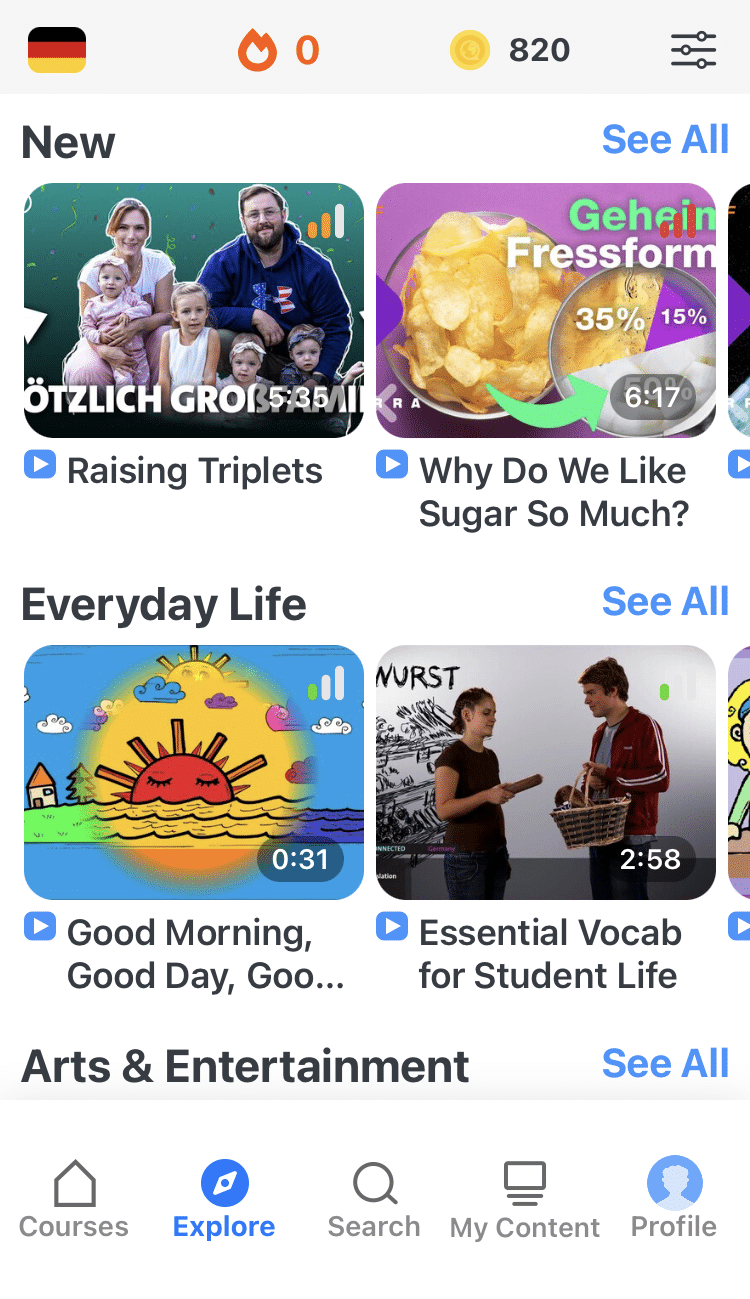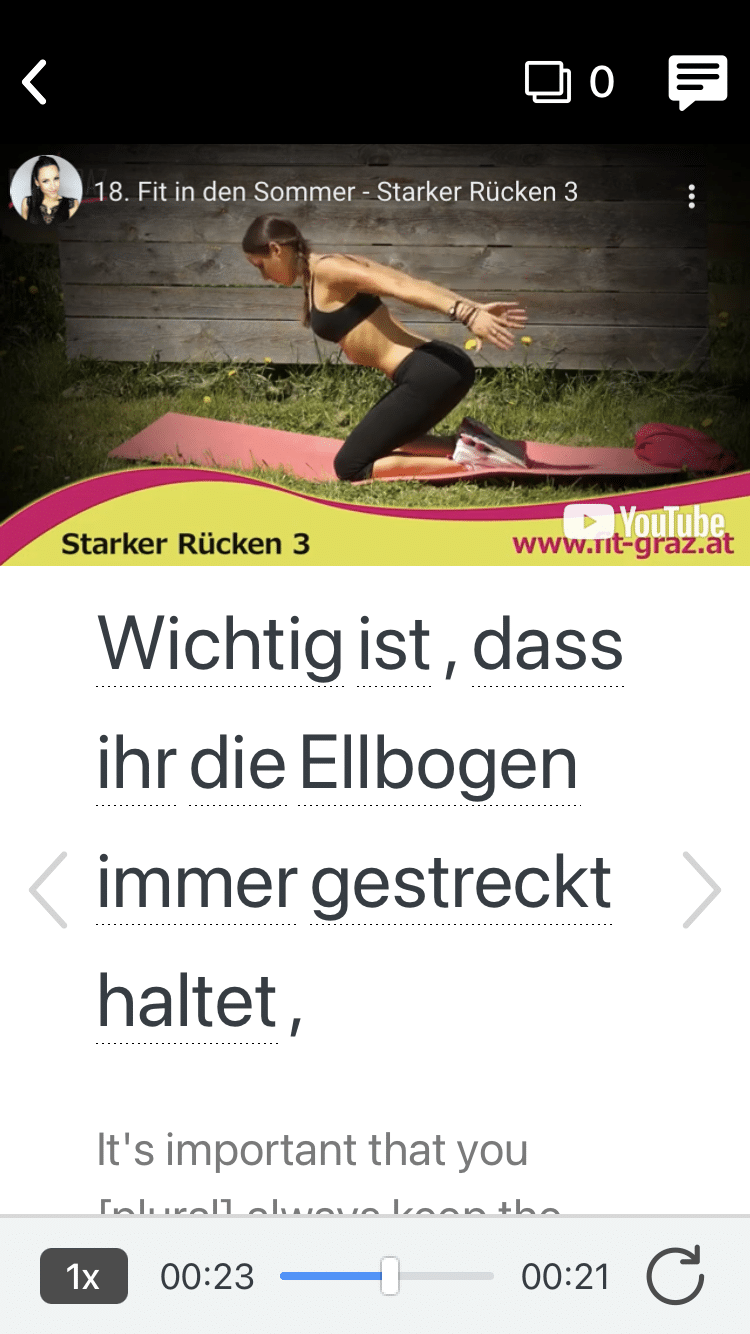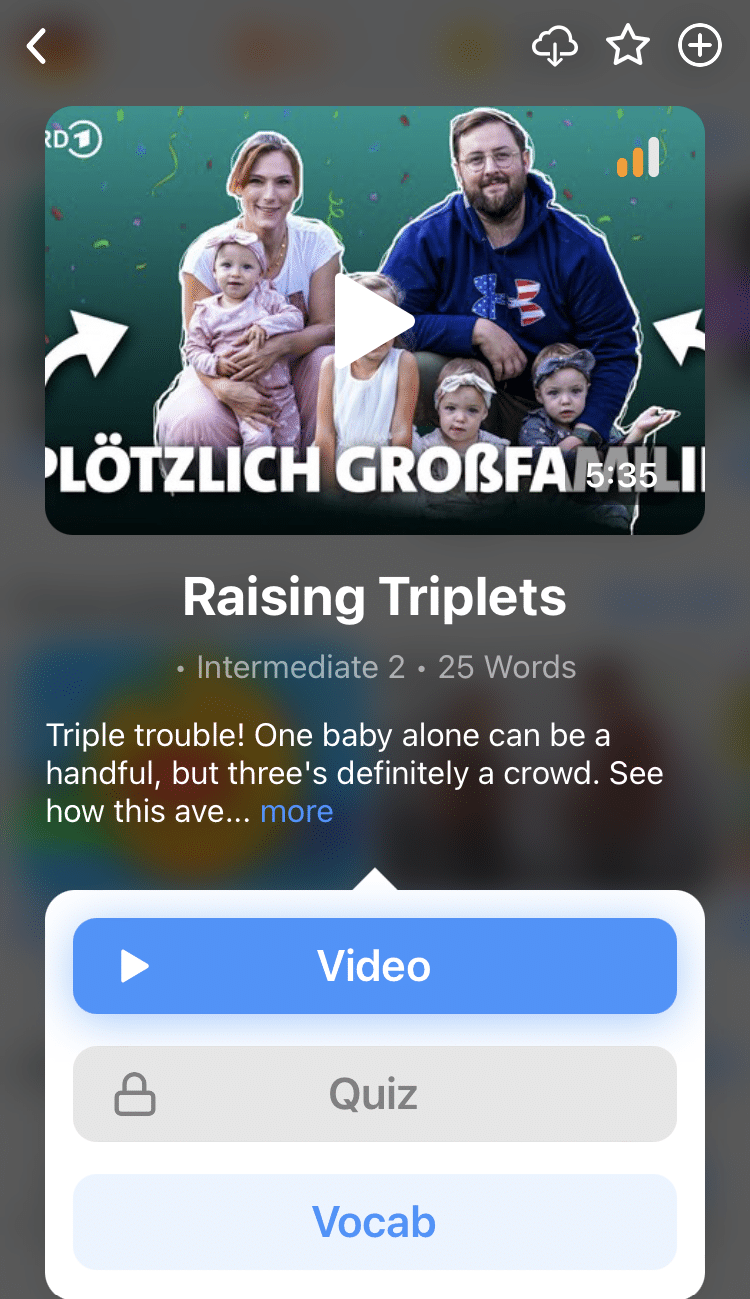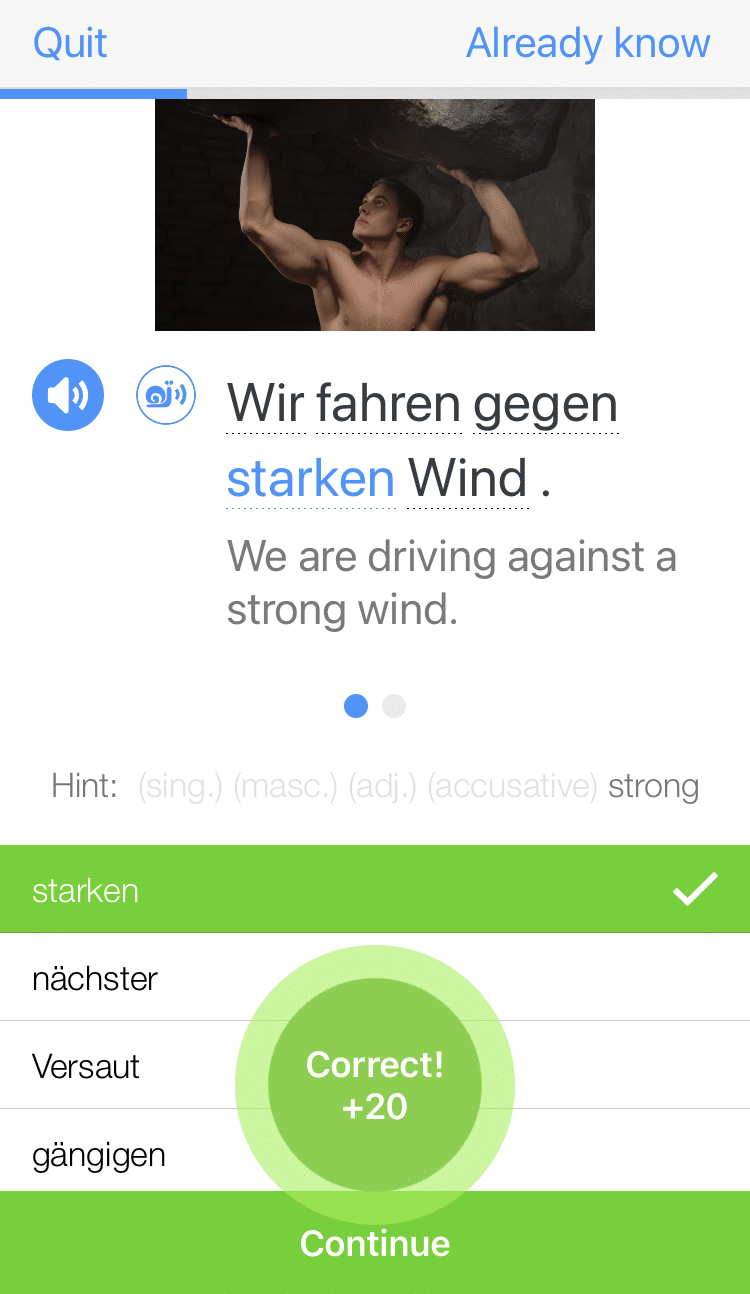
18 Tips for Doing a German Accent
When learning German, one of the keys to fluency is being able to communicate with native speakers of the language. But even if you know the vocabulary, gender system, verb conjugation and the case system well, communication isn’t possible if your accent isn’t good enough.
To deal with this issue, you need to work specifically on your German accent.
Here are the keys to achieving a native level German accent, with plenty of audio and examples to guide you along your German learning journey to pitch-perfect Deutsch.
Contents
- Tips for Pronouncing Consonants
- 1. J Is Pronounced Like Y
- 2. W Is Pronounced Like V
- 3. Z Is Pronounced Like Ts
- 4. V Is Pronounced Like F
- 5. CH at the Beginning of the Word? Follow the Etymology!
- 6. CH at the End of a Word is Throaty and Guttural
- 7. ST and SP Word Beginnings Change the S Sound
- 8. TH Is Pronounced Just Like a T
- 9. PF Is Just Like PH in English
- 10. R Is More Guttural
- 11. Pronouncing the ß (Eszett)
- 12. Got a Q? How About a KUH-FUH?
- Tips for Pronouncing Vowels
- How to Practice Your German Accent
- And One More Thing...
Download: This blog post is available as a convenient and portable PDF that you can take anywhere. Click here to get a copy. (Download)
Tips for Pronouncing Consonants
Most of the letters in the German alphabet are consonants, so it’s only fitting that we start with those here.
Many German consonants are pronounced much like in English, which is also a Germanic language, but there are some key differences.
1. J Is Pronounced Like Y
You probably already knew this one. But say “yes” to J, as this letter is pronounced with a Y. Here are some examples:
2. W Is Pronounced Like V
Like in these examples:
3. Z Is Pronounced Like Ts
What did the drums say to the guitar? — Ba-dum-tss!
This percussion punctuation to a joke is a good thing to keep in mind when it comes to the letter Z. That’s because in German, the letter Z is pronounced like the sound of a cymbal—”tss.” You find this sound in English in words like “artsy” or “tsunami.”
Here are some examples to illustrate this pronunciation:
4. V Is Pronounced Like F
In German, the letter V is pronounced like the English F. Here are some examples:
5. CH at the Beginning of the Word? Follow the Etymology!
CH doesn’t really belong at the beginning of any bonafide German word. But that’s not the case for the numerous loanwords that stem from other languages. Total gate crashers, right?
Words from across the border in France have a SHH sound:
English loanwords, or German neologisms inspired by the English word, keep their CHU sound:
- Cheeseburger — cheeseburger
- Checken — to check
- Check-in — check-in
If they don’t seem French or English, perhaps Greek or Latin, you bring it all the way back to a more Germanic K sound:
6. CH at the End of a Word is Throaty and Guttural
The CH sound isn’t made at the front of your mouth, but rather in your throat. Think less Bowie “ch-ch-ch-changes…” and more how the Scottish pronounce the CH in “loch.” In fact, you’ve clearly spent too much time in a cold Highland “loch” and caught yourself a cold—because the CH sound in German sounds just like when you’ve got some phlegm stuck in your throat.
Here’s a few examples:
- Buch — book
- Nach — after, by, to
- Ich brauche ein Tuch. — I need a towel.
7. ST and SP Word Beginnings Change the S Sound
When you find “ST” at the beginning of a word, it’s pronounced more like “SHHT.”
To help remember this: Imagine you’re in a library and someone is talking, so you shoosh them—SHH! But this hasn’t stopped them, so you launch your tongue to the top of your mouth to give them a good tutting as punishment—TUH. Now put them together—SHH-TUH.
Listen to these examples to learn the sound:
Similarly, the SP combination in German is pronounced with a clear SHH sound followed by sudden, plosive P sound.
If you find an ST or an SP in the middle or end of a word, there is no change to the S sound.
8. TH Is Pronounced Just Like a T
Yes, in German, the TH sound as in English is typically pronounced as either T or D. German does not have the same TH sound as English, so when encountering words with TH in German, you replace it with the closest German sounds.
9. PF Is Just Like PH in English
Just like the PH in English, PF is pronounced as a simple F sound in German. So get your PH in balance and listen to these examples:
10. R Is More Guttural
In German, the R sound can be pronounced more gutturally, especially at the beginning of a word. This guttural or uvular R is produced using the uvula, which is the fleshy extension at the back of the throat.
The R sound in German can be more guttural or rolling, especially when it appears at the beginning of a word or after a vowel. It’s not the same as the English R sound.
Think back to the guttural sound we made for CH. Think of this as a precursor CH-R.
11. Pronouncing the ß (Eszett)
The letter ß in German is called “Eszett” or “scharfes S,” and it represents a specific sound. Its name comes from a combination of the letters S and Z.
Though the ß may look like a B on steroids, there’s no need to be intimidated, because it actually just makes a normal S sound.
Here are some examples:
12. Got a Q? How About a KUH-FUH?
We pronounce the letter Q like “kyoo” in English. But in German, the sound starts off the same with the K, but then comes the curveball—KFUH.
KF-onfused? Don’t worry, here are some examples to help:
Tips for Pronouncing Vowels
German vowels also have some similarities with English vowels, but there are some key and notable differences.
13. Pronounce A Like the A in “Father”
In German, the letter A is generally pronounced as an open back unrounded vowel, similar to the A in English “father.” Here’s a few examples:
14. The German E Can Be Short Or Long
The letter E can have two slightly different pronunciations, depending on the letters that follow it.
If you have an E followed by a cluster of consonants, then it’ll most often be an EH sound, like in “get”.
Got it? Well, here’s some examples just in case:
But if your E is not followed by a bunch of consonants, it’s more like the AY in “lay”.
This is the same sound with double EE too:
- Schnee — snow
15. The German I Can Also Be Short Or Long
Just like E, the letter I has two possible pronunciations, depending on the letters that follow it. But this time, there’s a big difference.
If you have an I followed by a cluster of consonants, then it will almost always be a short I, pronounced like the I in “bitten.”
This can be seen in one of the simplest German words: ich (I). Because the I is followed by a cluster of consonants C and H, you pronounce it with a short IH sound.
Poor I, always being chomped on by those consonant clusters… Here’s a few more examples:
But when the letter I isn’t being ganged up on by consonants, it squeals with joy, and makes an EE sound. For example, in another simple German word wir (we), there’s only one consonant after the I, so you pronounce it “veer.”
Here’s some more examples of the long I:
16. You Guessed It: O Can Be Short Or Long Too
Copying its older siblings, the O can be short or long, too.
When O is followed by a cluster of consonants, it’s usually pronounced like the AU in “auto” for American English or the O in “hot” for British English. Here’s a couple of examples:
But when O is not followed by a bunch of consonants, it’s usually pronounced like a simple “oh.” Like, “oh wow, I can’t believe it’s that simple.” Here are a couple of examples:
17. Pronounce the Umlauts
Umlauts, those two dots above some vowels, are special characters in German, and they affect the pronunciation of the vowels. The three main umlauts in German are Ä, Ö and Ü. Here are example words to illustrate their pronunciation:
Ä can be long or short, but luckily you’ve already learnt it! It’s pronounced just like the standard German E, long, so like “EH” in “get”:
Or short, so like the “AY” in “lay:”
- Käse — cheese
- Universität — university
Ö doesn’t really have an equivalent in English. But you can make it just by making the standard German “E” sound, like “EH” in “get.” You then just need to pretend you’re making a circle with your mouth, just like an Ö:
Ü can confuse a lot of learners, but you can do it!
Just smile for the camera and say “cheese,” hold the EE sound and then round your lips like you’re about to smooch someone. And there you have it, a picture perfect Ü:
18. There Are Fewer Diphthongs
Good news! There aren’t many of these, and once you learn them, they’re pretty consistent!
EI Diphthong and IE Diphthong
These two can look really daunting, but it’s simple! Just look at the second letter and pronounce it how you would say it when singing the English alphabet.
For example, it’s EI, with I second, pronounce it like “eye:”
- Zeit — time
And if it’s IE, with E second, pronounce it like “see:”
- Dieb — thief
EU, ÄU and OI Diphthongs
Someone has stolen your Beute (loot), so you shout “oi!” And that’s how you pronounce EU, ÄU and OI!
AU Diphthong
You touch a Zaun (fence) but realize too late, it’s of the electric sort. Ow!
And that exclamation of pain is exactly how you pronounce AU in German.
How to Practice Your German Accent
Join a German Speaking Group or Find a Language Partner
There are many apps, such as the Berlin-based Tandem, where you can seek out German language partners.
Many other possibilities are discussed in detail in this post:
How to Make German Friends Online: 10 Places to Find Language Exchange Partners | FluentU German Blog
If you want to find out how to make German friends online, here are 10 great ways to find a language partner! Read this guide to learn about a range of websites and…
Improve Pronunciation with Audio Clips
Coffee Break German is a language program aimed at absolute beginners. Through a series of slowly spoken audio clips with English translations, you’re walked through the most common words and phrases in the language.
The German accent you’ll hear is standard German as spoken in Germany.
There are also interesting audio lessons that cover topics such as the usage of dass (that) and German word order.
Coffee Break German is a free program but if you really enjoy it, you can subscribe to the premium version which has bonus audio as well as PDF notes and video lessons.
 Forvo is a free online pronunciation dictionary with community-uploaded audio clips from native speakers.
Forvo is a free online pronunciation dictionary with community-uploaded audio clips from native speakers.
It’s constantly and rapidly growing, as the beauty of it is that anyone can upload a pronunciation clip even if there are already a dozen other clips for a given word or phrase.
The benefit there is in hearing how people from different German-speaking regions pronounce a particular word or phrase. Forvo tells you the gender and location of the speaker for every audio clip.
 Rhinospike is essentially Forvo for texts. People upload written texts and then native speakers volunteer to read them aloud.
Rhinospike is essentially Forvo for texts. People upload written texts and then native speakers volunteer to read them aloud.
German happens to be one of the more represented languages on the platform, with more than 2,000 German clips available.
The thing that keeps Rhinospike alive and popular is that users must upload three clips of their own in order to download one clip as an MP3.
Listen to Radio, Podcasts, Movies and TV Shows
Watching and listening to German media can help you get a feel for the rhythm and intonation of the language.
Here are a couple of suggestions that I know and love:
- News in Slow German does exactly what the title promises, and it also keeps you up to date on German current events and culture.
- Babylon Berlin is a fantastic TV series about the historical and cultural events that have taken place in Berlin. It also has fantastic costumes, set design and it was actually shot in Berlin.
For some excellent German movie suggestions, click over to this post:
The 15 Best German Movies with English Subtitles You Can Stream Now | FluentU German Blog
Watching German movies with English subtitles is a great way to learn the language without getting lost in a complicated plot line. Check out these 15 great films for your…
FluentU takes authentic videos—like music videos, movie trailers, news and inspiring talks—and turns them into personalized language learning lessons.
You can try FluentU for free for 2 weeks. Check out the website or download the iOS app or Android app.
P.S. Click here to take advantage of our current sale! (Expires at the end of this month.)
Are you gaining confidence in your German pronunciation skills after reading this post? I know I sure am. Just remember to get out there and communicate. It’s really the best way to improve. Auf Wiedersehen!
And One More Thing...
Want to know the key to learning German effectively?
It's using the right content and tools, like FluentU has to offer! Browse hundreds of videos, take endless quizzes and master the German language faster than you've ever imagine!
Watching a fun video, but having trouble understanding it? FluentU brings native videos within reach with interactive subtitles.
You can tap on any word to look it up instantly. Every definition has examples that have been written to help you understand how the word is used. If you see an interesting word you don't know, you can add it to a vocabulary list.
And FluentU isn't just for watching videos. It's a complete platform for learning. It's designed to effectively teach you all the vocabulary from any video. Swipe left or right to see more examples of the word you're on.
The best part is that FluentU keeps track of the vocabulary that you're learning, and gives you extra practice with difficult words. It'll even remind you when it’s time to review what you’ve learned.
Start using the FluentU website on your computer or tablet or, better yet, download the FluentU app from the iTunes or Google Play store. Click here to take advantage of our current sale! (Expires at the end of this month.)





